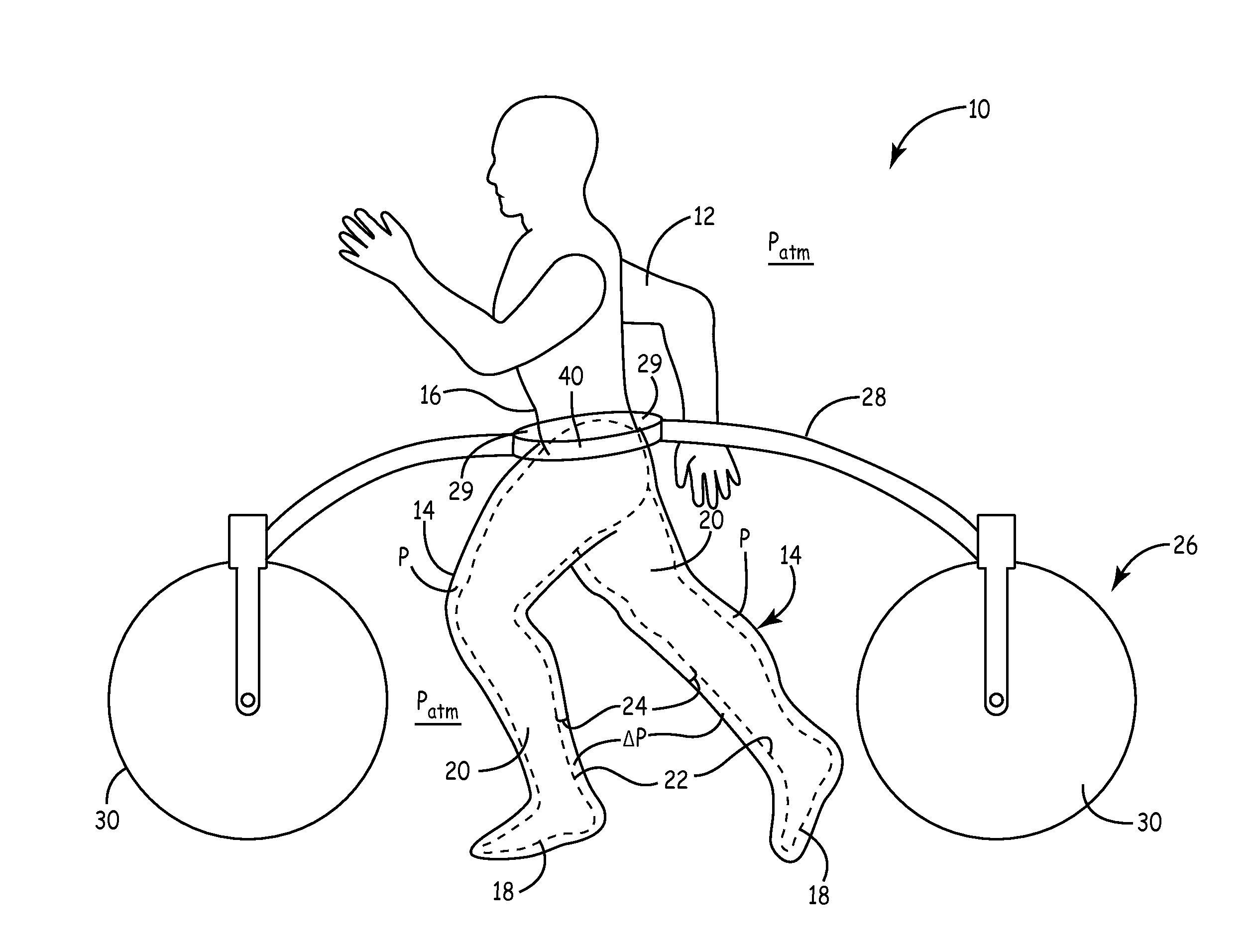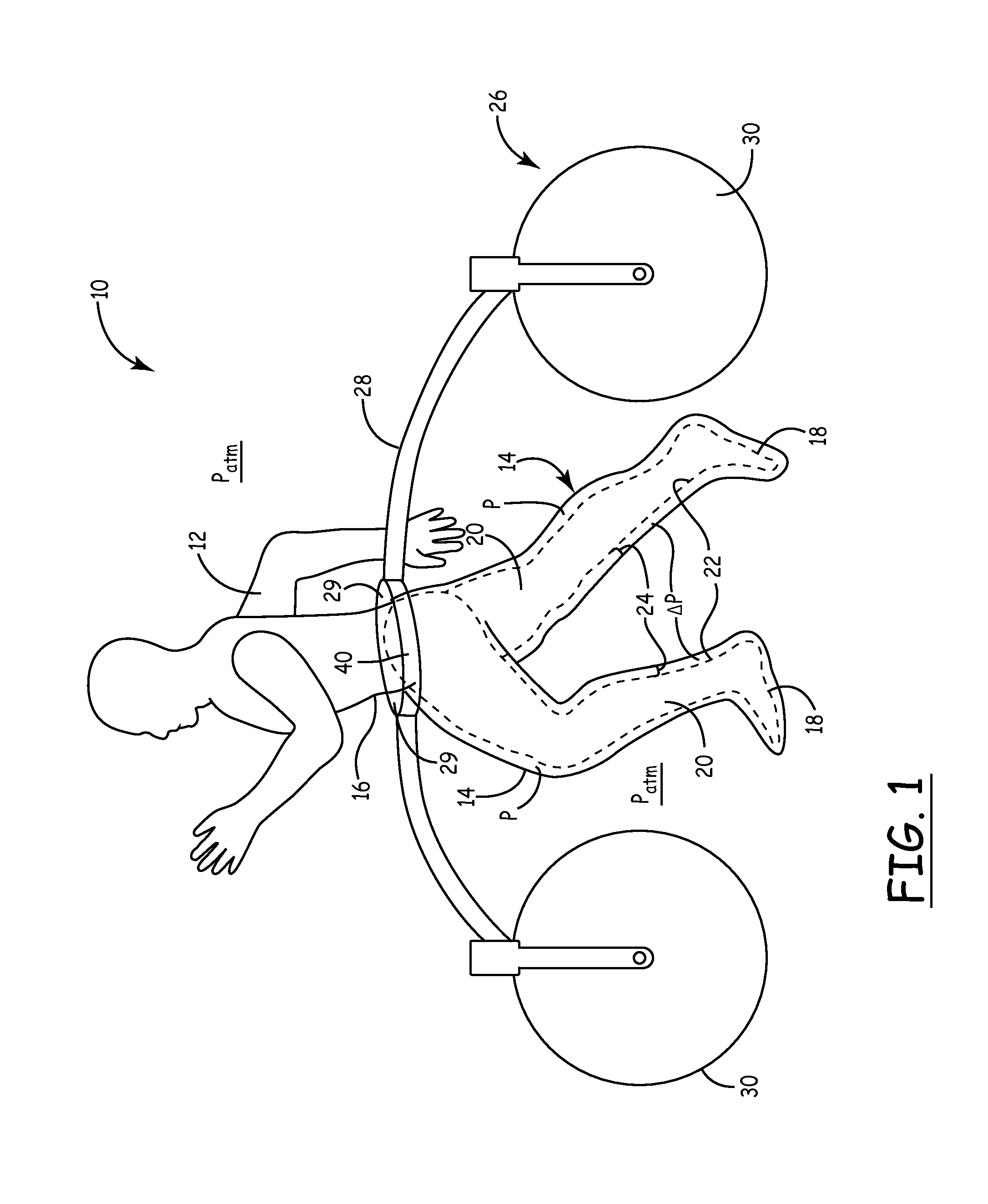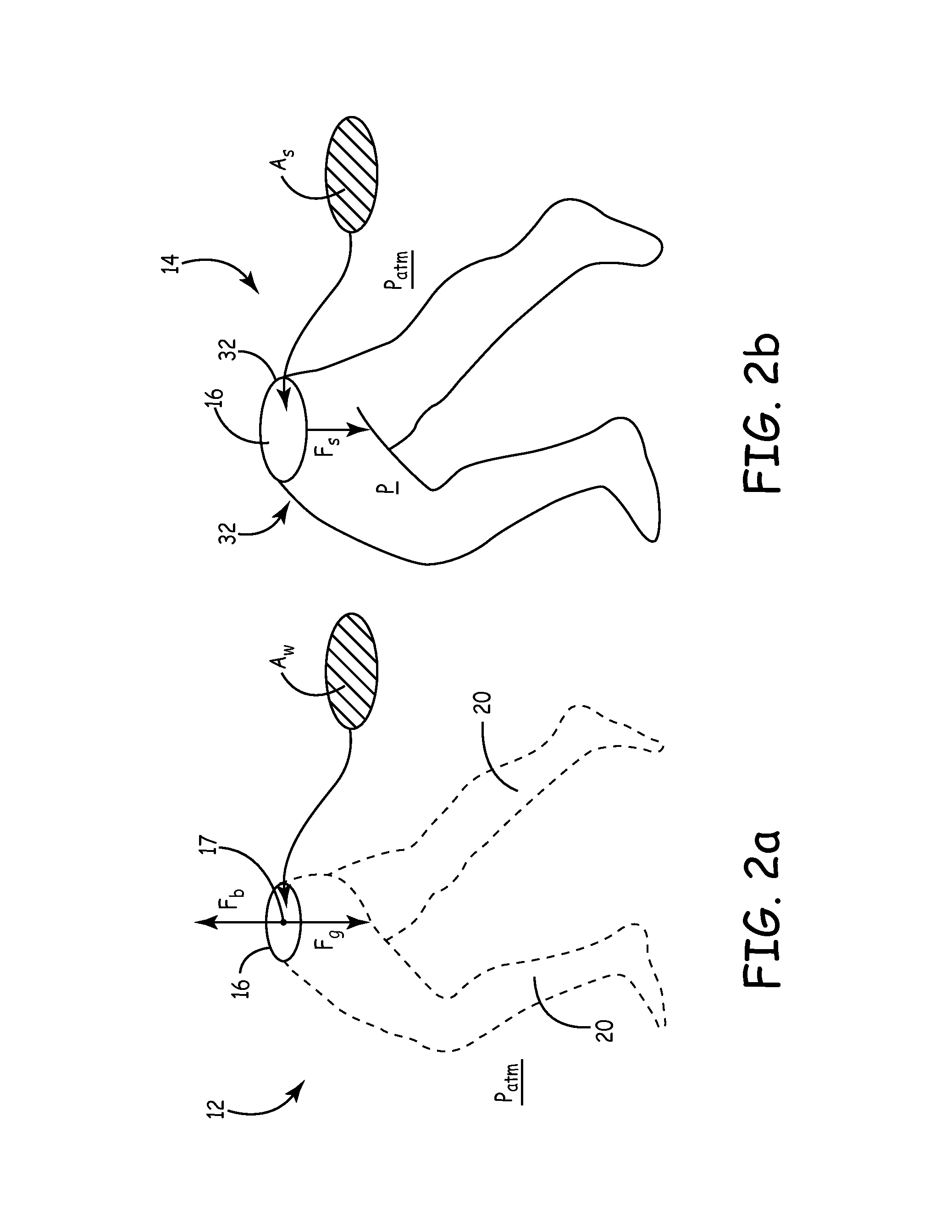Suspension and Body Attachment System and Differential Pressure Suit for Body Weight Support Devices
a technology of body weight support and attachment system, which is applied in the direction of gymnastic exercise, sport apparatus, cardiovascular exercise devices, etc., can solve the problems of damage to body bones or joints, injury, damage to body joints, etc., and achieves the effect of not restricting natural body movements, facilitating the mobility of physically disabled, and being portable and convenien
- Summary
- Abstract
- Description
- Claims
- Application Information
AI Technical Summary
Benefits of technology
Problems solved by technology
Method used
Image
Examples
example 1
Mobile Support Device
[0219]A rigid band is constructed from curved rigid aluminum strip 1 inch wide and ⅛ inch thick. The band is oval in shape. Pulleys are attached to the band as follows. Two pulleys are attached at the front and back midpoints of the band, two pulleys are attached at the midpoints at the side in the configuration shown in FIG. 47. Two additional pulleys, now shown, are attached at the right and left sides of each hand. One of the pulleys is attached frontwards on the band from the midpoint pulley on each side, and another pulley is attached rearwards from the midpoint pulley on each side. To attach the pulleys to the pants, rigid supporting bars (2014) are constructed of ⅛″ thick ¾″ wide aluminum bars are inserted into sleeves sewn into the pants as shown in FIG. 46. A cord made from a low stretch material run alternatively through band pulleys and the suit pulleys and tied in a knot. The cord is adjusted so that the pulleys attached to the pants are 4 inches bel...
example 2
Powered Mobile Support Device
[0221]A mobile ‘walker’ device has been constructed using the concepts illustrated in FIG. 54. A standard commercially available rollator frame was used as a mechanical base. Compression springs (Century Spring) that yield about 50 pounds for 6 inches of compression were used, one on each side as per the FIG. 54. Gear motors that displace the springs were used. The pressure pants, band and pulley attachment mechanism as described in Example 1 were employed identically in this design, except that the band is pushed up with the compression spring mechanism, instead of pulled up or tensioned with the over-hanging suspension system. A 24 lead acid battery source is used to power a portable air pump (Thomas), an air regulator (Bellofram), the gear motor, load cell and pressure sensors, and an electronics PLC controller (Galil Inc).
[0222]Elderly or physically-impaired people undergoing rehabilitation, or people suffering from gait and balance problems due to s...
PUM
 Login to View More
Login to View More Abstract
Description
Claims
Application Information
 Login to View More
Login to View More - R&D
- Intellectual Property
- Life Sciences
- Materials
- Tech Scout
- Unparalleled Data Quality
- Higher Quality Content
- 60% Fewer Hallucinations
Browse by: Latest US Patents, China's latest patents, Technical Efficacy Thesaurus, Application Domain, Technology Topic, Popular Technical Reports.
© 2025 PatSnap. All rights reserved.Legal|Privacy policy|Modern Slavery Act Transparency Statement|Sitemap|About US| Contact US: help@patsnap.com



